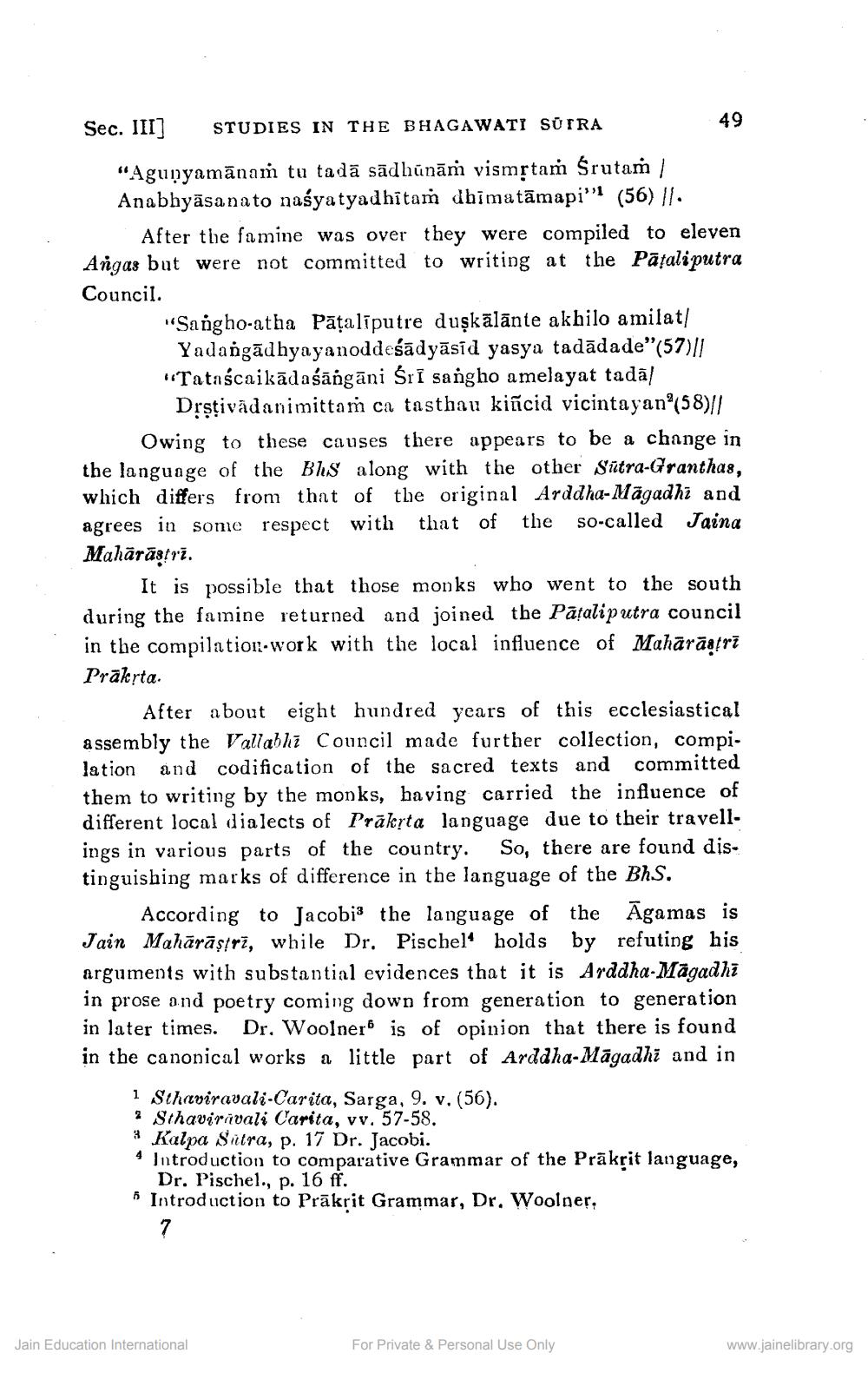________________
Sec. III]
STUDIES IN THE BHAGAWATI SUTRA
"Aguṇyamānam tu tadā sādhūnām vismṛtam Śrutam / Anabhyasanato naśyatyadhitam dhimatamapi" (56) ||.
After the famine was over they were compiled to eleven Angas but were not committed to writing at the Pațaliputra Council.
"Sangho-atha Pataliputre duşkālānte akhilo amilat/ Yadangadhyayanoddeśādyāsīd yasya tadadade" (57)|| "Tataścaikadaśāngāni Śrī sangho amelayat tada/
Dṛṣṭivadanimittam ca tasthau kiñcid vicintayan (58)//
49
Owing to these causes there appears to be a change in the language of the Bhs along with the other Sutra-Granthas, which differs from that of the original Arddha-Magadhi and agrees in some that of the so-called Jaina respect with Mahārāṣṭri.
It is possible that those monks who went to the south during the famine returned and joined the Pataliputra council in the compilation-work with the local influence of Maharastrī Prakrta.
After about eight hundred years of this ecclesiastical assembly the Vallabhi Council made further collection, compilation and codification of the sacred texts and committed them to writing by the monks, having carried the influence of different local dialects of Prakrta language due to their travellings in various parts of the country. So, there are found distinguishing marks of difference in the language of the BhS.
According to Jacobis the language of the Agamas is Jain Maharaştri, while Dr. Pischel' holds by refuting his arguments with substantial evidences that it is Arddha-Magadhi in prose and poetry coming down from generation to generation in later times. Dr. Woolner is of opinion that there is found in the canonical works a little part of Arddha-Magadhi and in
1 Sthaviravali-Carita, Sarga, 9. v. (56).
2 Sthaviravali Carita, vv. 57-58.
Kalpa Sutra, p. 17 Dr. Jacobi.
4 Introduction to comparative Grammar of the Prakrit language, Dr. Pischel., p. 16 ff.
5 Introduction to Prakrit Grammar, Dr. Woolner,
7
Jain Education International
For Private & Personal Use Only
www.jainelibrary.org




